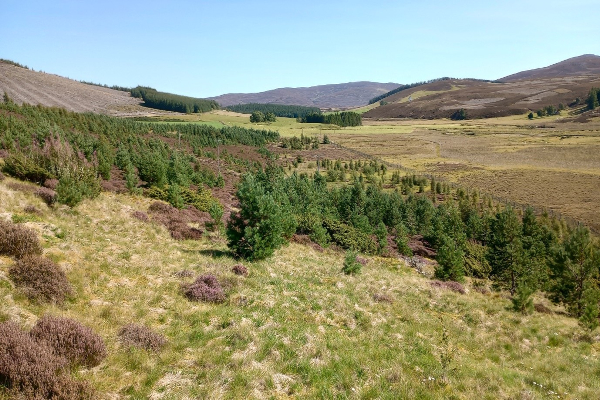Tree Relocation: Allargue Estate
26 September 2023Allargue estate has been family owned for over 300 years and is positioned on roughly 2400 hectares (ha) of upland habitats, of which 115 ha is forestry. The estate offers access to the Cairngorms National Park, sheep farming and regularly hosts shooting parties on its lands. Besides the native forestry, the estate retains commercial plantations on their site. This commercial plan was created in 2020 and allows for better access for future harvesting and maintains a forestry payout for the estate.
To tree or not to tree
Planting trees can provide a range of incredible benefits to a landscape, however, to maximise the positive outcomes, selecting the right mix of trees for an area is critical. Increasing tree coverage in Scotland is one of the key goals set by the Scottish Government to help combat climate change, however, this policy does not mean that every possible area should be planted. Recent research has found that in certain areas trees planted on moorlands are not storing more carbon and that allowing the land to remain heather-dominated could be more beneficial for carbon storage purposes [1]. Trees planted within these environments can lead to lower soil organic carbon (SOC) levels and increased soil respiration, essentially cancelling out any carbon storage in the above ground biomass. In addition, the provision of various habitats allows for biodiversity to thrive and offer multiple ecosystem benefits to the area, offering a host of additional benefits.
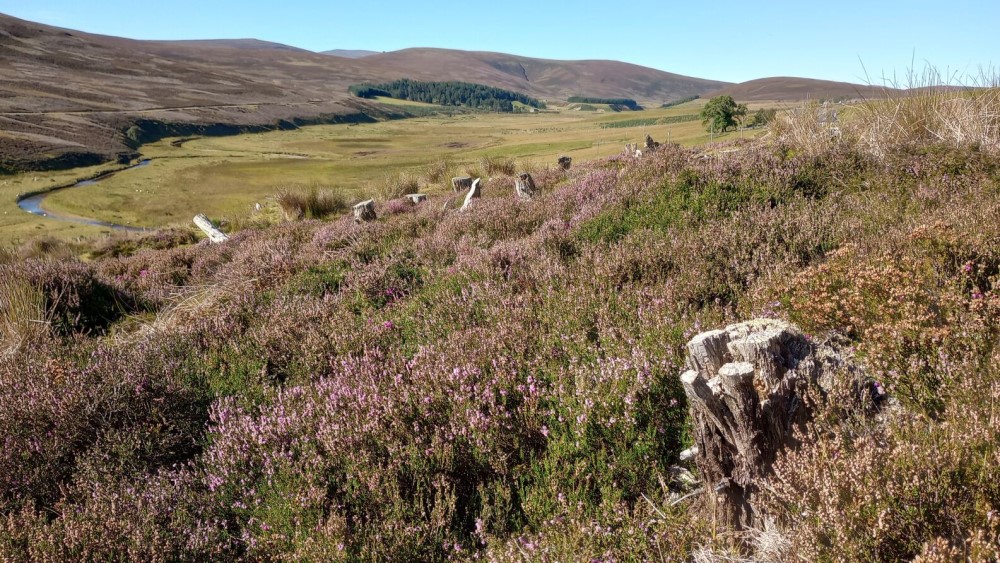
View of the estate from newly created moorland
Background
In the early 1990s Allargue Estate re-purchased forestry plantations, which had been historically sold to the Forestry Commission. The plantations were approaching the end of their recommended felling period and decisions were needed to ensure the viability of the forestry enterprise within the estate. Due to the location of the trees, the investment required to replant was not financially viable so alternative options needed to be made. The landowner decided, with guidance from Ranald McConnachie, a Forestry Consultant, that the existing location of the plantations was not the most financially viable area for growing trees and a desire to improve the biodiversity on the land was a key objective of the estate. The decision was made to apply to replant native plantations at a lower altitude to increase growth success rate and survival of the crop. In addition, by moving the trees to a lower altitude, the estate would be able to restore and increase moorland habitat, therefore, providing more habitat for declining biodiversity.
The Project
Working alongside a designated woodland officer the estate was able to replant 30 ha of predominantly native species: Rowan, Birch, Scots Pine and Willow, with some additions of Larch and Norway Spruce in roughly 5 ha blocks. The estate maintained a good relationship with the officer throughout the project and the aims and goals of the project, as well as those of the estate, were well negotiated and planned within the design. The new native forest was able to quickly establish at the lower altitude, improving the quality of trees on site and providing wider benefits.
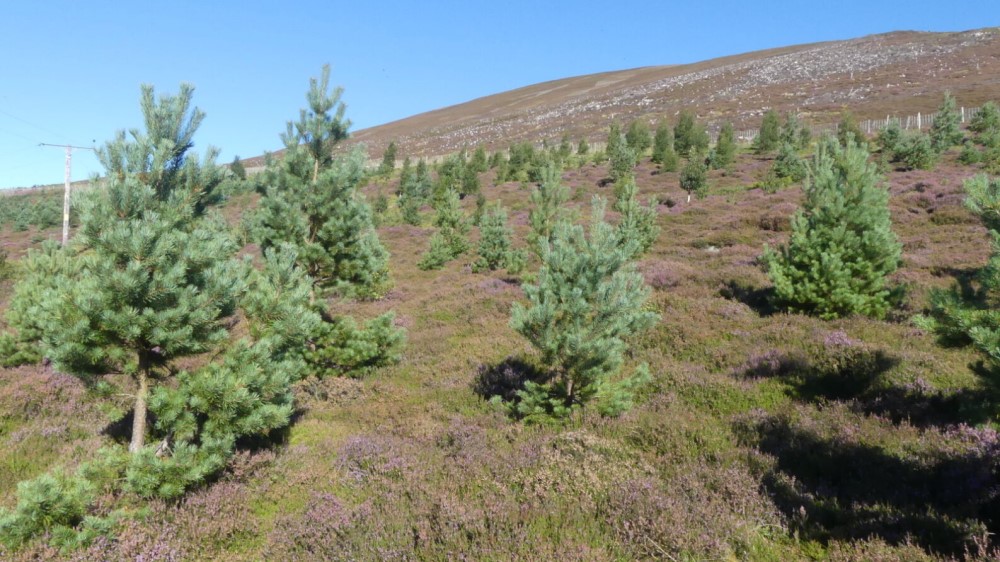
View of created moorland and new plantation
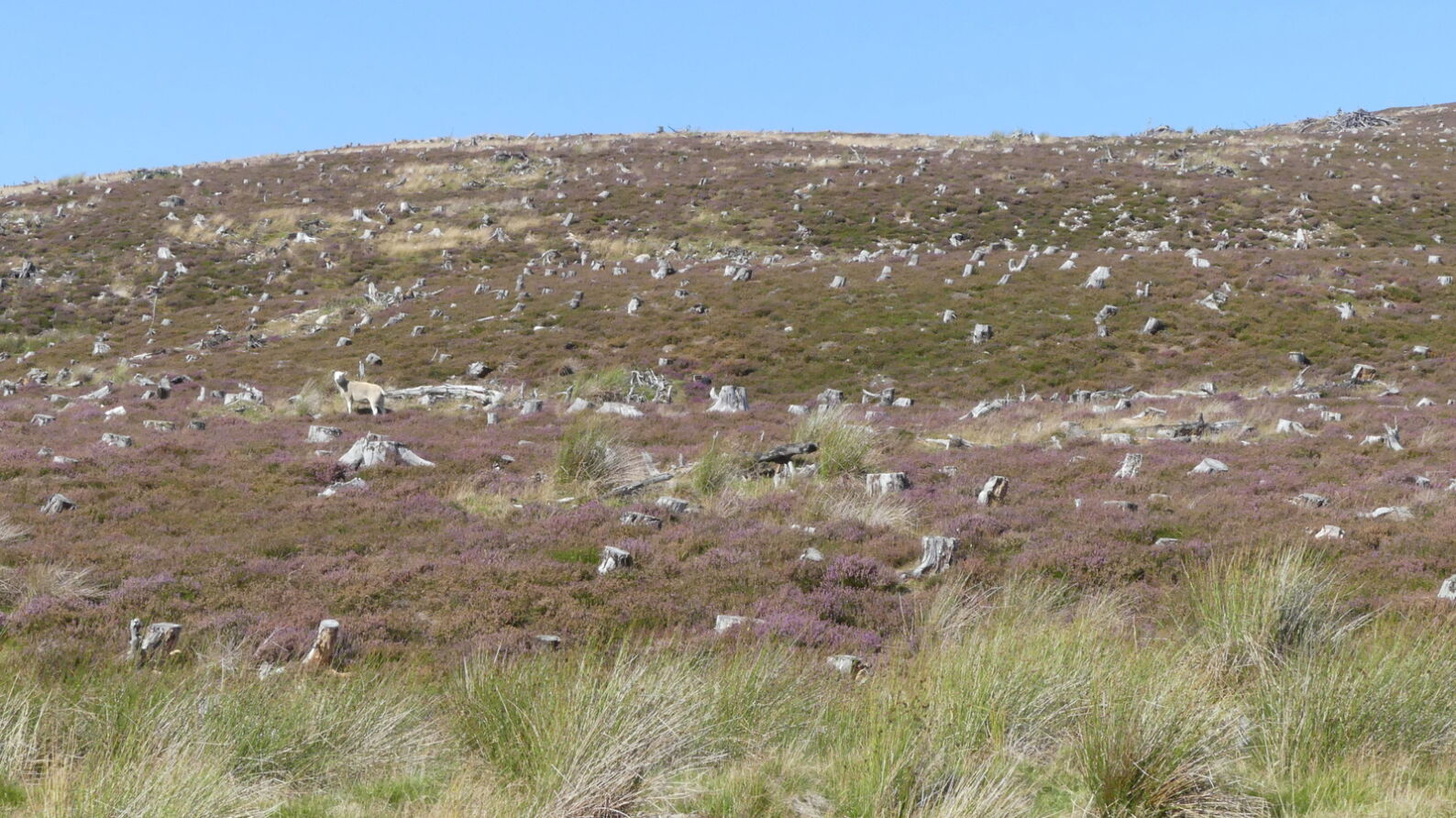
Felled area with moorland established
Benefits to the Estate
With the removal of trees from higher altitude, 115 ha of moorland has been reclaimed from previously declining forestry parcels, which offered reduced habitat diversity. This project has allowed the moorland to be restored and provide suitable habitats for species, which were in decline on the estate. Since the tree relocation, the estate has noticed a dramatic increase in ground nesting birds, particularly waders, black grouse (with an increase from one to five leks now present on site) and snipe. There have also been some sightings of small raptors including a kestrel and owl. In addition to bird species the estate has noticed an increase of juniper within the moorland. This demonstrates the key importance of moorland habitats and the multitude of services these habitats offer biodiversity. The newly created woodland parcels are now able to provide shelter belts and habitat corridors throughout the estate.
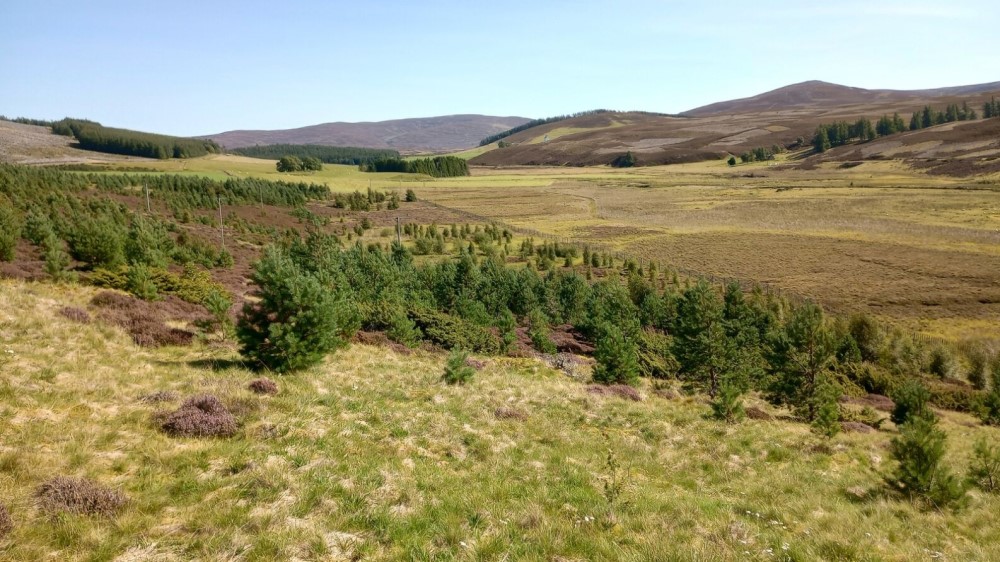
New woodland blocks
The Future
As the woodland develops, the bird species within the estate are increasing and the land manager wants to ensure that they remain. The estate plans to continue to monitor the biodiversity on site to see if there are changes as the trees mature. The estate has additionally noticed that since the removal of the plantation in the higher uplands there is an increased volume of water flowing through the estate. The increase of water on site has allowed for the felled areas to be rewetted, supporting this reformed habitat and rejuvenate a small lochan which is aesthetically pleasing to the surrounding area. However, looking at the lower ground, the additional water on site will be something that will need to be monitored and controlled if necessary to mitigate against risks such as soil erosion, and flooding. There could potentially be scope in the future to include some form of water management within the estate, however, this will develop over time as needed.
Further Information
The changes made within this estate were made with a focus on returning the land to a more supportive habitat for wildlife. Any changes made to forestry plans will require long-term planning to ensure the largest positive outcomes for the landowner and each new planting should be fully evaluated to determine its effects on the surrounding areas.
If you are interested in a forestry project on your land, then choosing which type of project is best suited to your land is imperative. Guides for Commercial or Native woodlands are available on the FAS site. Further questions and links about the right tree in the right place can also be found here.
Matt Herbst, SAC Consulting
[1] Friggens, N.L., Hester, A.J., Mitchell, R.J., Parker, T.C., Subke, J.A. and Wookey, P.A., 2020. Tree planting in organic soils does not result in net carbon sequestration on decadal timescales. Global Change Biology, 26(9), pp.5178-5188.
Related FAS Materials
Information Note: Land Management for Black Grouse (fas.scot)
Related External Materials
Integrating Trees Network - Farming For a Better Climate
The Right Tree in the Right Place: Planning for Forestry and Woodlands
Why Plant Trees? - Plant Trees - Woodland Trust
Sign up to the FAS newsletter
Receive updates on news, events and publications from Scotland’s Farm Advisory Service

